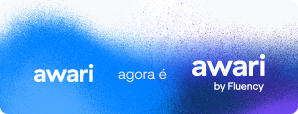Metodologia Waterfall e Agile: Compare as metodologias Waterfall e Agile
Learn the differences between the Waterfall methodology and Agile methodology, their strengths and weaknesses, and how to choose the right one for your project.
Glossário
In conclusion:
Both the Waterfall methodology and the Agile methodology have their own strengths and weaknesses. The Waterfall methodology is well-suited for projects with fixed scope and predictable requirements, while the Agile methodology is ideal for projects that require Flexibility and Adaptability to changing needs. Ultimately, the choice between these methodologies depends on the nature of the project and the specific requirements and constraints faced by the team.
Key Differences Between Waterfall and Agile Methodologies
Sequential vs. Iterative Approach:
– Waterfall: The Waterfall methodology follows a sequential approach, where each phase of the project is completed one after another. The project moves forward once the previous phase is completed. It typically consists of distinct phases such as requirements gathering, design, development, testing, and deployment.
– Agile: In contrast, Agile methodology follows an iterative approach. Instead of completing all the phases in sequence, Agile focuses on delivering the project in iterations or sprints. It involves frequent collaboration with stakeholders and allows for continuous improvement.
Flexibility and Adaptability:
– Waterfall: The Waterfall methodology is well-suited for projects where the requirements are well-defined and unlikely to change significantly during the course of the project. It is less adaptable to changes and requires thorough planning upfront.



– Agile: Agile methodology, on the other hand, is ideal for projects where requirements are likely to change or evolve. It encourages flexibility and adaptability, allowing for frequent iterations and adjustments based on feedback.
Customer Involvement:
– Waterfall: Waterfall methodology typically involves limited customer involvement during the development process. The focus is more on adhering to the predetermined plan and delivering the final product at the end.
– Agile: Agile methodology emphasizes close collaboration and regular interaction with customers. It encourages customer involvement throughout the project, facilitating quicker feedback and alignment with customer expectations.
Documentation Requirements:
– Waterfall: Waterfall methodology places significant emphasis on documentation. Each phase requires detailed documentation, such as requirements specifications, design documents, test plans, and user manuals.
– Agile: Agile methodology prioritizes working software over extensive documentation. While documentation is important, Agile teams focus more on delivering working features and fostering collaboration rather than extensive documentation.
Risk Management:
– Waterfall: In the Waterfall methodology, risk assessment and management occur mostly at the beginning of the project during the planning phase. Risks are identified and addressed upfront.
– Agile: Agile methodology incorporates risk management throughout the project’s lifespan. Since the project is developed iteratively, risks can be continuously assessed and mitigated during each sprint.



Choosing the Right Methodology for Your Project
Selecting the appropriate methodology for your project is crucial for its success. Consider the following factors when choosing between Waterfall and Agile methodologies:
- Project Requirements: Assess the nature of your project requirements. If the requirements are clear and unlikely to change significantly, Waterfall may be a suitable choice. On the other hand, if requirements are dynamic and subject to change, Agile would be more appropriate.
- Project Size and Complexity: Evaluate the size and complexity of your project. Waterfall is more suitable for large, complex projects that require thorough planning and documentation. Agile, on the other hand, works well for smaller, more flexible projects that can evolve over time.
- Team and Stakeholder Collaboration: Consider the level of collaboration and involvement required from team members and stakeholders. If close collaboration and frequent feedback are essential, Agile would be a better fit. If limited customer involvement is acceptable, Waterfall may be a viable option.
- Time Constraints: Evaluate the project’s timeline and any deadline constraints. Waterfall’s sequential approach may be suitable for projects with fixed deadlines, as it allows for better long-term planning. Agile’s iterative approach, however, allows for more flexibility in adjusting timelines and priorities.
Remember to analyze these factors carefully and consider the specific requirements of your project when choosing between the Waterfall and Agile methodologies.
Desenvolva a sua carreira hoje mesmo! Conheça a Awari
A Awari é uma plataforma de ensino completa que conta com mentorias individuais, cursos com aulas ao vivo e suporte de carreira para você dar seu próximo passo profissional. Quer aprender mais sobre as técnicas necessárias para se tornar um profissional de relevância e sucesso?
Conheça nossos cursos e desenvolva competências essenciais com jornada personalizada, para desenvolver e evoluir seu currículo, o seu pessoal e materiais complementares desenvolvidos por especialistas no mercado!
https://awari.com.br/?utm_source=blog





